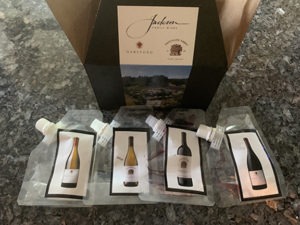
My sample pack (after the fact) from Jackson Family Winery.
I received a tasting kit last week containing four individual servings of California’s Hartford Family Winery and Freemark Abbey wines—part of a virtual tasting with winemakers Kristy Melton (Freemark) and Jeff Stewart (Hartford). Not as much fun as full bottles, but regardless of the sample size, it’s always entertaining and educational to sip with—and poke the brains of—the folks who fashion these wines.
And I’m a very big fan of these two particular wineries. Both fall under the umbrella of Jackson Family Wines, the Santa Rosa, California-based giant that, at roughly 6 million cases sold per year, ranks as the ninth-largest wine producer in the U.S. Founded in 1982 under the name Kendall-Jackson, JFW’s portfolio includes wineries across California, as well as Oregon, Australia, Chile, France, Italy and South Africa.
My early memories of their wines were of lush, succulent cabernets. I recall a media trip about 15 years ago in Florida when the host made the mistake of allowing me to pick something off the wine list. I said, “Are you sure?” They said yes. So I selected a 1997 Kendall-Jackson Cab.
It was a really good year. And a tad pricey.
They didn’t let me order any more wine after that.
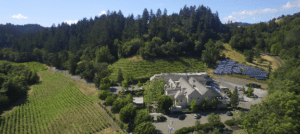
Hartford Family Winery in Forestville, California.
As JFW has expanded, so has its ability to show off the ridiculous diversity of California’s geology, climate and soils. That includes Hartford’s vineyards, which feature some of the coolest (from both a temperature and aesthetic standpoint) areas of the Russian River Valley, Green Valley, Anderson Valley and Carneros appellations. The notoriously hard-to-farm Seascape on the Sonoma Coast, which has built a cult following for its pinot noirs and chardonnays, is a vital part of that lineup.
Freemark, meanwhile, has somewhat more history to it. Grover Cleveland had just been elected U.S. president and the population of California was just about to reach the 1-million mark when this Napa County winery was founded in 1886. Freemark would go through a few incarnations before realizing international fame in 1976, when both its 1969 Cabernet Sauvignon and ’72 Chardonnay were included in the historic Judgment of Paris competition, which helped California earn worldwide acclaim for its wines.
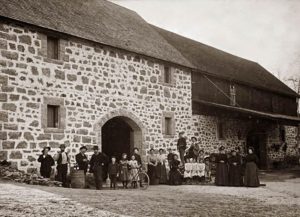
Freemark Abbey, founded in 1886.
Today, with nearly 50 vintages’ worth of Napa Valley cabs tucked away in its library in the tiny city of St. Helena, Freemark’s signature portfolio of wines represents one of the most fully realized cabernet sauvignon programs in America.
BATTLING DROUGHT
When you think of California wine country in recent years, though, you can’t help but think of fires and droughts. While they were, for the most part, spared the former, vineyards ran dry again this season.
“We normally get 30 inches of rain annually at the winery, and out on the coast it’s typically more like 90 inches,” notes Stewart from his winery’s home base in Forestville, California (gas station population: 1). “But this past winter we got a little over 11 inches here and about 25 inches on the coast. A lot of our vineyards are dry-farmed, where (the roots) go down and find water. But some will struggle even in a year like this when the water table is so low. So we pruned quite a few vineyards to pull the vines back a little bit. And at our Jennifer’s vineyard in the southern part (of the Russian River Valley), we’ve had no water and sacrificed fruit for the year to protect the vines for next year.”
Freemark, for its part, has increasingly relied on recycled water, says Melton.
But dealing with climate change is nothing new for JFW.
“I am super-proud of their efforts when it comes to sustainability and environmental issues,” says Mark Bruni, V.P. of Sales for Jackson Family Wines Canada. “The Jackson and Torres families came together to create the International Wineries for Climate Action group.” And Julia Jackson, a second-generation proprietor of Jackson Family Wines, founded Grounded.org, which “weaves together strategists, scientists, ‘solutionists’ and engaged citizens who want to ensure a livable planet,” Bruni reminds.
GREAT VINTAGE
While the battles with Mother Nature aren’t going away anytime soon, the 2021 harvest has the region’s winemakers rather stoked, Stewart says. “It’s a smaller crop this year, but as for the quality, we are so excited about the potential of this vintage.”
These recent editions below from both Hartford and Freemark are also worth celebrating. While they are occasional Vintages releases at the LCBO, they are available throughout the year through Select Wine Merchants in Ontario and Summit Fine Wines out West.
 Hartford Court Russian River Valley Chardonnay 2019 ($39.95)
Hartford Court Russian River Valley Chardonnay 2019 ($39.95)
One of no less than 12 chardonnays created by Hartford Family Wines head winemaker Jeff Stewart, this is an elegant, medium-bodied wine highlighted by citrus, Granny Smith Apple, kiwi and almond. There’s oak there, but just enough to frame it and evoke its natural character, emphasizes Stewart, whose barrel use helps counter the high acidity in the mix. And while it’s 100% chardonnay, this is an extensive blend, with grapes sourced from as many as 14 vineyards to provide an overall feel for the Russian River Valley AVA. The alcohol says 14.5%, but there’s no burning indication of that kind of potency. Plenty of nuance and great balance here. 92
Freemark Abbey Napa Valley Chardonnay 2019 ($49.95)
There’s a lot of California chardonnay that has put people off of chardonnay altogether. But this is far from that big, fat, over-oaked stereotype. There’s texture, to be sure, but as with Hartford’s chard above, the oak usage is strategic, keeping the acidity bright and the palate complex. The nose opens with a tropical punch of pineapple/peach (derived from its ¼ portion of grapes from its Rancho Sarco vineyard in Napa). Then the apple/citrus takes over, characteristics primarily derived from its Carneros wine region portion, which accounts for more than half of the blend. Then there’s a lean minerality and crispness from the Howell Mountain vineyard. Add in a little spice and vanilla to round out the package. Overall it’s ripe but beautifully balanced. Fine to drink on its own, but a very good lobster wine. It’ll cellar for up to eight years, but why wait? 92
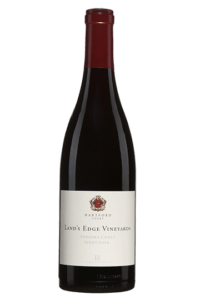 Hartford Court Land’s Edge Pinot Noir 2018 ($69.95)
Hartford Court Land’s Edge Pinot Noir 2018 ($69.95)
Hartford winemaker Jeff Stewart might be a tad obsessed with pinot noir. I mean, the guy makes 17 of them! “Each site gives us something different,” he defends.
Land’s Edge is a blend of three Sonoma coast sites (including Seascape), ranging up to 1,000 feet in elevation. Hartford’s motto is “High-risk, high-reward single-vineyard wines,” and Seascape “is the poster child” for that motto, Stewart observes. “There are vintages out there where we’ll just get quarter-ton (of fruit) per acre, (where it) has cost us $37,000 a ton to farm that little bit of fruit. When you do the math and figure out how many cases we’re getting, we’re losing money. But the wines are so good that we can’t help ourselves.”
A maritime influence dominates the area, “producing a small but concentrated crop of pinot noir,” the winery notes. “The foggy coastal climate preserves natural acidity in the grapes and helps delineate the purity of fruit flavours and expression of the unique coastal terroir in this wine. Balanced acidity, layers of complexity and firm tannins will allow for long and graceful aging.”
Black cherry and pomegranate take centre stage on the nose, with raspberry and crushed violets and rose petals all part of the evocative aromas. It’s satiny smooth on the mid-palate with a lush, lengthy finish. But this is a still a robust pinot that will surely become more sophisticated with age. 94
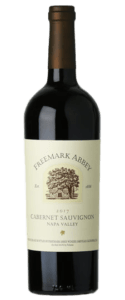 Freemark Abbey Napa Valley Cabernet Sauvignon 2017 ($79.95)
Freemark Abbey Napa Valley Cabernet Sauvignon 2017 ($79.95)
Here’s an excellent Bordeaux blend of 84% Cabernet Sauvignon, 12% Merlot, 2% Petit Verdot, 1.5% Malbec and 0.5% Cabernet Franc. “We spent decades honing in on the right location to plant Cabernet,” offers Freemark winemaker Kristy Melton. “This is a blend from great vineyards to show what Napa Valley can produce.”
In a land where it’s very easy to build monster cabernets and cab blends with a lot of ripe fruit and powerful alcohol levels, this is happily even-keel—its 14.5% alcohol fairly well integrated. Little surprise then that when I asked what his favourite Freemark wine was last week, Hartford Family winemaker Jeff Stewart cited this one. “I think it is one of the stupidest values around—an amazing wine at an amazing price,” Stewart said. “Everyone is trying to make statement wines that are flashy, flashier and flashiest. People forget sometimes that wine is supposed to taste good.” (Keep in mind that Stewart is buying from the company shop, so gets a discount. But as Napa cabs go, this is still good value.)
For this 2017 vintage, look for a little forest floor and cedar on the nose, with vibrant dark fruit ranging from black cherries to currants and blackberries. Some chocolate undertones are found in the mid-palate, with the rich dark fruit never letting go. It’s a great steak wine right now, but it would be great to revisit this in five to 10 years after its tartness mellows. Or in 15 years when it probably hits its peak. 93
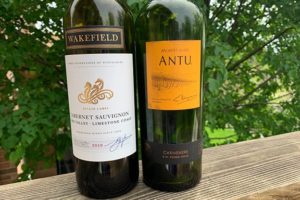
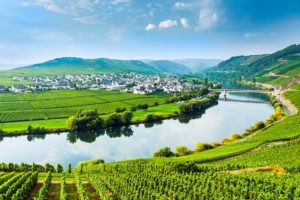
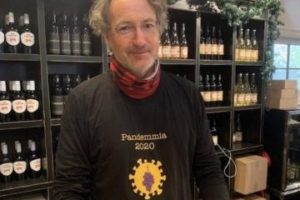
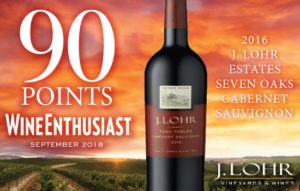
Leave a Reply
Your email is safe with us.